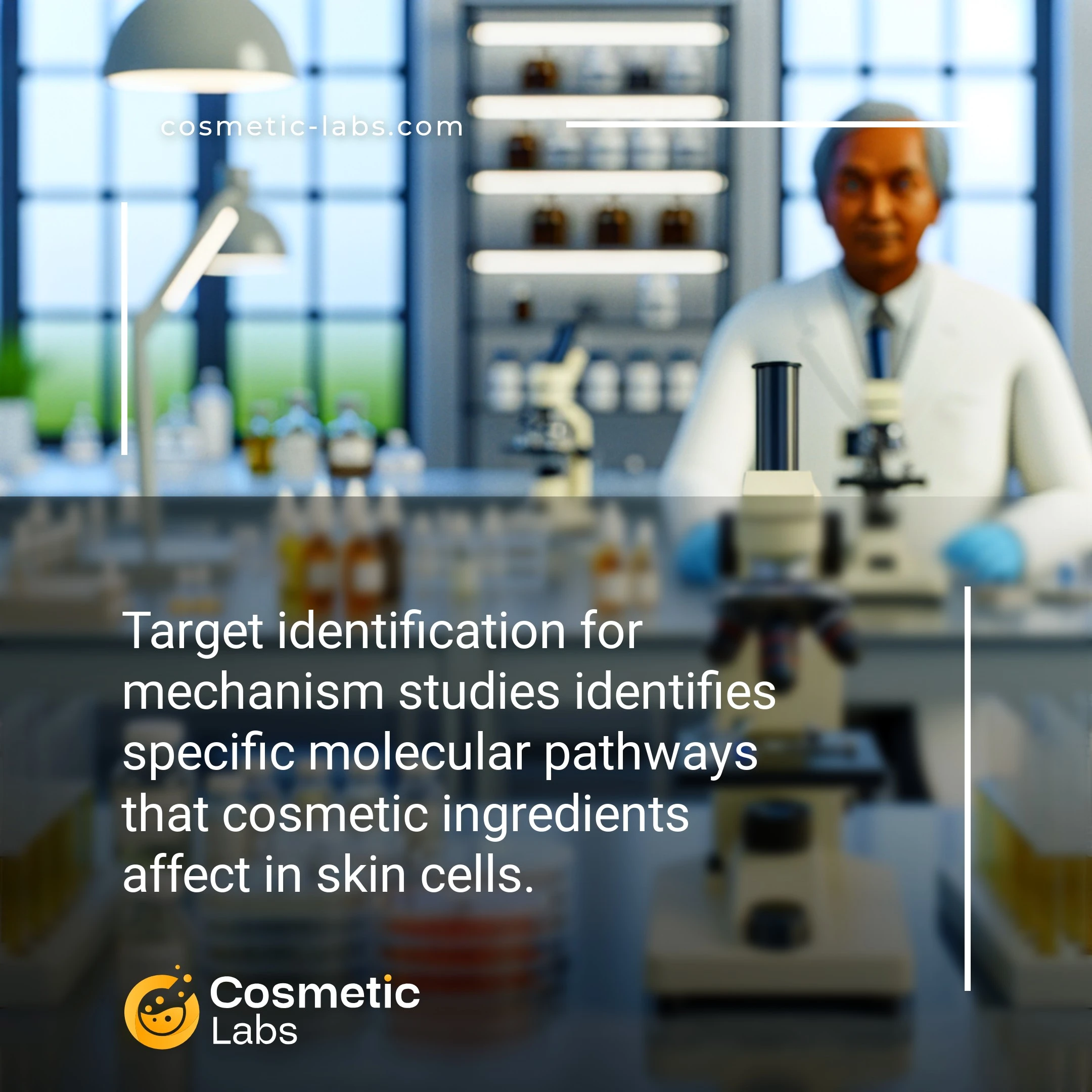Target Identification Services for Cosmetic Mechanism Studies

What is Target identification?
Target identification for mechanism studies pinpoints the specific molecular pathways and cellular targets that cosmetic ingredients affect in skin cells. Labs use advanced techniques like proteomics and gene expression analysis to map how active compounds interact with skin proteins, enzymes, and receptors. This process reveals which biological targets drive ingredient efficacy, enabling brands to make evidence-based claims about anti-aging, brightening, or barrier repair effects while supporting regulatory submissions with concrete molecular data.
Why do you need this service?
Beauty brands use target identification studies to pinpoint exactly which cellular pathways their active ingredients affect, turning vague anti-aging claims into scientifically-backed product positioning. Labs help you map ingredient interactions with specific skin proteins, collagen synthesis pathways, or melanin production mechanisms, giving you concrete evidence for regulatory submissions and marketing claims that competitors can’t easily replicate.
Who provides Target identification services?
All cosmetic labs providing Target identification services
There is no company providing these services at the moment.
Target Identification for Mechanism Studies Services
Target identification services help cosmetic brands pinpoint the specific biological pathways and molecular targets their active ingredients affect. These studies form the scientific foundation for mechanism of action research, allowing you to understand exactly how your formulations work at the cellular level.
Molecular Target Discovery and Validation
Labs use advanced screening techniques to identify which proteins, enzymes, or cellular receptors your ingredients interact with. This process involves protein binding assays, gene expression analysis, and pathway mapping to create a complete picture of biological activity.
Key discovery methods include:
- Proteomics screening for direct protein interactions
- Transcriptomics analysis for gene expression changes
- Enzymatic assays for metabolic pathway involvement
- Cell-based reporter systems for pathway activation
These studies typically take 4-8 weeks and provide the data needed for regulatory submissions and marketing claims.
Pathway Analysis and Biomarker Selection
Once targets are identified, labs map the downstream effects through cellular signaling networks. This analysis reveals which biomarkers best demonstrate your product’s efficacy and helps optimize formulation concentrations.
Pathway studies examine:
- Signal transduction cascades triggered by your ingredients
- Cross-talk between different cellular pathways
- Dose-response relationships for target engagement
- Time-course effects on cellular processes
Ready to validate your ingredient’s mechanism of action? Connect with specialized cosmetic labs on our platform to discuss your target identification needs and timeline requirements.
Applications of Target Identification for Mechanism Studies Services
Beauty brands use target identification for mechanism studies services to validate ingredient efficacy and understand how active compounds interact with skin cells at the molecular level.
Anti-Aging Product Development
Labs identify specific cellular targets like collagen synthesis pathways and elastin production mechanisms to demonstrate how peptides and retinoids work. Teams analyze protein expression changes and measure enzyme activity levels to prove ingredient performance. This data supports marketing claims and helps formulate products with measurable anti-aging effects.
Target identification studies typically take 8-12 weeks and provide detailed molecular pathway maps. Results show which genes get activated, protein levels change, and cellular processes improve with treatment.
Acne Treatment Formulation
Research teams pinpoint bacterial targets and inflammatory pathways to develop effective acne treatments. Labs test how salicylic acid, benzoyl peroxide, and botanical extracts affect P. acnes bacteria and sebum production. Studies reveal which antimicrobial mechanisms work best and identify synergistic ingredient combinations.
Target analysis helps brands understand why certain ingredients reduce breakouts while others cause irritation. This knowledge guides formulation decisions and dosage optimization.
| Study Type | Primary Targets | Timeline | Key Outcomes |
|---|---|---|---|
| Collagen Boosting | Fibroblasts, TGF-β pathway | 10-14 weeks | Protein synthesis rates, gene expression |
| Antimicrobial Action | Bacterial cell walls, biofilm formation | 6-8 weeks | MIC values, bacterial count reduction |
| Barrier Function | Ceramide synthesis, tight junctions | 8-12 weeks | TEWL measurements, lipid analysis |
Connect with specialized cosmetic labs on our platform to access target identification services that validate your ingredient claims and accelerate product development timelines.
